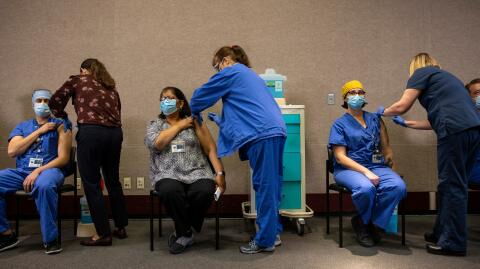Herd immunity was a hot topic at the beginning of the COVID-19 epidemic. Researchers, institutions, and politicians seemed to agree that we needed to achieve this key goal, which would allow us to be (finally) immune to the virus as a group.
Discover our latest podcast
But now the majority of the adult population has been fully vaccinated. Is it perhaps time to ask ourselves why this vaunted collective immunity has not yet been reached, and whether it is even possible?
What even is herd immunity?
According to the Pasteur Institute's definition:
Herd immunity is the percentage of a given population that is immune/protected against an infection from which an infected subject introduced into that population will transmit the pathogen to less than one person on average, effectively bringing the epidemic to extinction, because the pathogen encounters too many protected subjects.
This group immunity, therefore, could be obtained either through vaccination or through natural infection and recovery, according to infectious diseases specialists. In September 2020, the Pasteur Institute estimated that 67% of a given population would need to be immunized in order to access it.
Here's a hitch, then: as of this day, the majority of the adult population is vaccinated, but in view of the current course of the epidemic, no one can deny that these scientific predictions have failed. So how can this be explained?
Why has vaccination not helped us reach our goal?
This herd immunity hypothesis had one blind spot, and not a small one at that: the many variants of COVID-19. Indeed, these variants have a much higher R0 (reproduction number of the virus) than the original virus. A high R0 means that more people get infected from a single person having caught COVID.
While the R0 of the original Wuhan strain was 3 as of September 2020 (after containment), the R0 of the Delta variant in Great Britain is 4.5. Worse, the R0 of the Omicron variant, infamous for being the most viral one to this day, could be well over 10, according to a study published in the scientific journal The Lancet on 17 December.
These high rates of infection , combined with the declining protection of all vaccines after just a few months, have unfortunately not allowed us to achieve this societal jackpot. Not to mention the hit-or-miss protection of vaccines against COVID variants. The first real-life data published in the UK show that the efficacy of the vaccines against Omicron is zero after two doses of AstraZeneca. And it is 35% after two doses of Pfizer-BioNTech, rising to 70% after 3 doses.
So, considering how many variants are popping up over time, is herd immunity an attainable hope? The question remains open.















